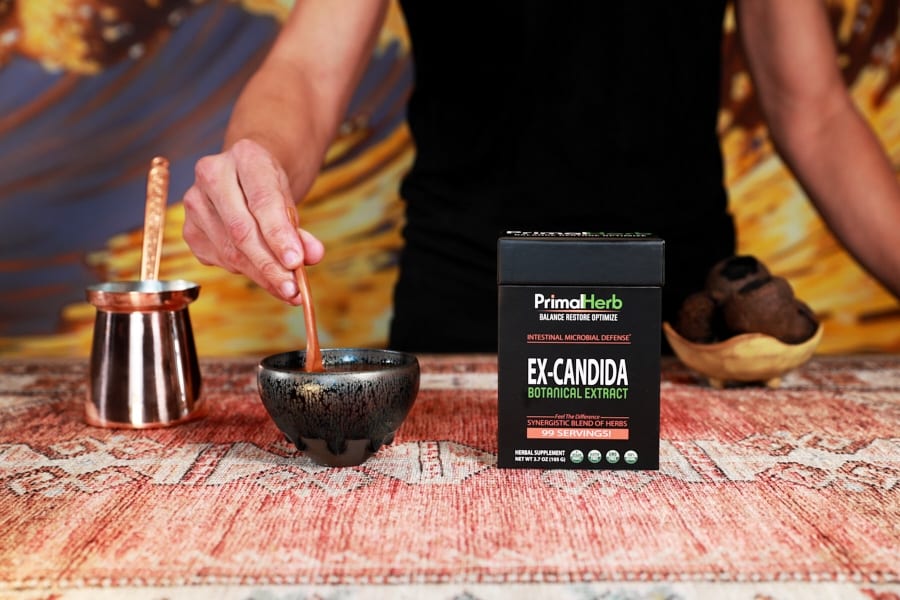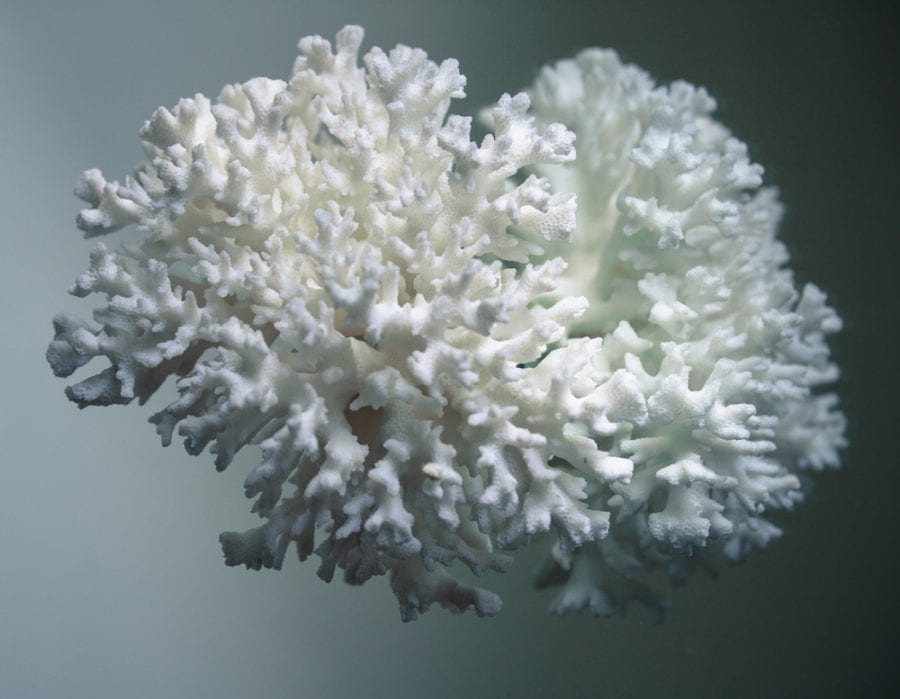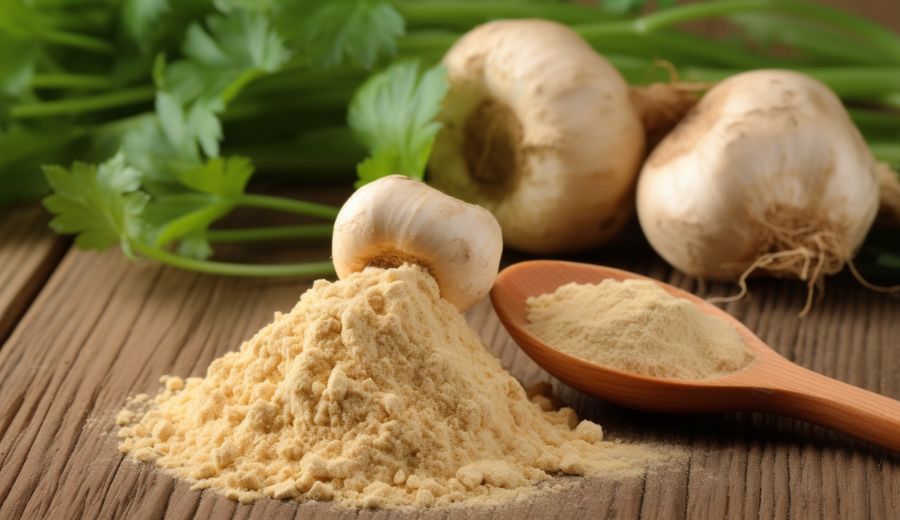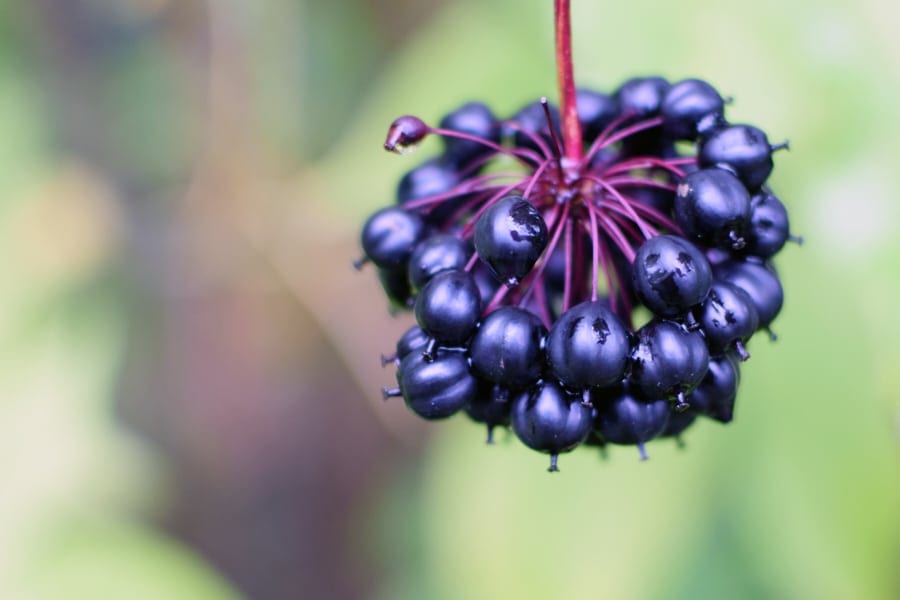Candida Overgrowth Wreaks Havoc on Health & What to Do About It
Sometimes, even with the right diet and exercise regime, our health may suffer from a wide variety of symptoms. Random rashes, exhaustion, allergies, depression, and bloating may all seem unrelated. Yet, they can have one common cause: Candida overgrowth.
Candida is an extremely common yeast that every person has. In fact, it’s the most common yeast in the human body. It helps regulate the microbiome and digest nutrients in small amounts.
However, Candida is also an opportunistic yeast. This means that it will take over the microbiome when it’s given a chance. Stressful lifestyle, poor diet, oral contraceptives, and antibiotics are all instances where the gut’s normal balance can be disrupted. In these cases, it’s common for Candida to take over and create problems in the body.
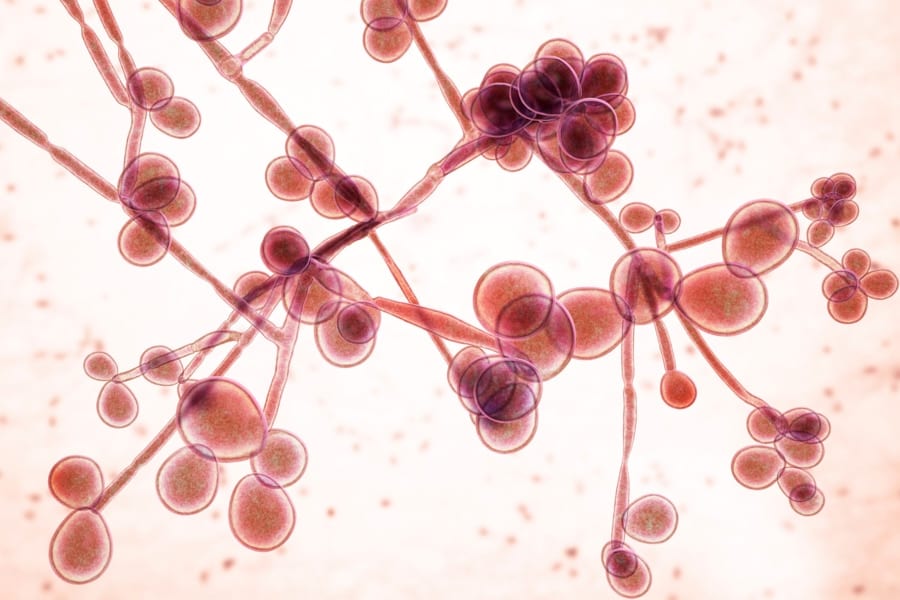
Candida overgrowth happens often: it’s the most common cause of fungal infections in humans. Symptoms of an overgrowth include:
- Oral thrush
- Recurring UTI’s
- Sinus infections
- Brain fog, difficulty concentrating, poor memory, ADD
- Autoimmune issues
- Anxiety or depression
- Fatigue
- Skin and nail fungal infections, including eczema, rashes, and psoriasis
- Gut disturbances
- Joint pain
While Candida may be puzzling for sufferers with its wide umbrella of symptoms, there are effective treatments. For thousands of years, practitioners used observation to find herbs to heal the gut. Today, researchers have largely confirmed many of their findings.
Herbs and supplements can provide a powerful boost to a hurting microbiome. They can bring balance and fight stubborn Candida. We offer the purest and most potent supplements on the market with EX-CANDIDA. Backed by thousands of years of tradition and modern science, these ingredients can help bring balance back to the body.
These ingredients include:
Sweet Wormwood Extract
Also known as Sweet Annie and Annual Wormwood, Sweet Wormwood is an annual summer herb. It has a strong bitter flavor and originated in both Asia and Europe.
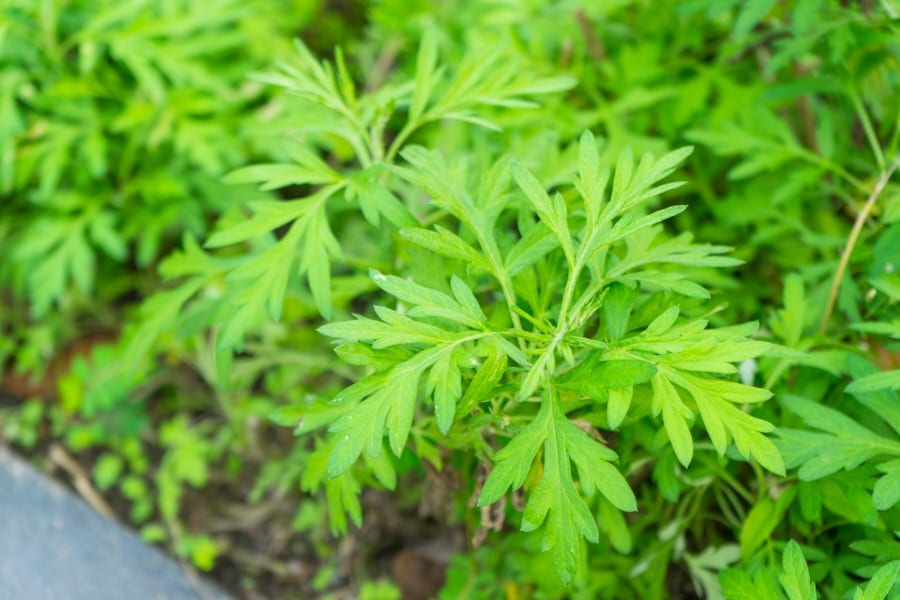
Traditional Chinese Medicine practitioners have harnessed the properties of Wormwood for over 2,000 years to help digestive complaints. There are also records from the ancient Roman Empire of its medicinal benefits.
Wormwood was banned in the US until recently because of its role as one of the primary ingredients in absinthe. However, Wormwood is not considered a hallucinogen and has been legal in the US since 2007.
While Wormwood lacks significant vitamins or minerals, the plant compounds are potent to boost the microbiome. It can be a powerful aid in the fight against Candida.
Arthritis and joint pain can be a symptom of Candida overgrowth. If Candida enters the bloodstream, it can infect the joints and lead to arthritis. It can happen after surgery when the bloodstream is vulnerable to infection or if the overgrowth becomes severe.
Getting rid of Candida joint pain can be challenging. Wormwood can help.
Wormwood has anti-inflammatory properties that can reduce joint pain and even arthritis. One 2017 randomized, placebo-controlled trial sought to see the effect of Wormwood on osteoarthritis. Patients who took the extract twice daily for 12 weeks experienced a significant reduction in pain.
Although it has not been studied as a tincture, Wormwood’s anti-inflammatory properties point to its ability to reduce joint pain.
Wormwood is full of antioxidants to help fight the oxidation and inflammation common with candida overgrowth.
One compound, chamazulene, is an antioxidant most concentrated in the plant’s pre-flowering stage. Artemisinin, another compound in Wormwood, also helps fight inflammation. Researchers believe that it works by inhibiting the proteins released by the immune system that promote inflammation.
One of the most pervasive symptoms of Candida is gut disturbances. However, Wormwood has a long history of improving gut function.
In one study, researchers wanted to find Wormwood’s effect on Crohn’s disease. Crohn’s causes inflammation of the digestive tract. It causes symptoms such as fatigue, diarrhea, abdominal cramping, and other digestive issues. In the study on 40 patients with the disease, those who supplemented with Wormwood for eight weeks experienced a decrease in symptoms over the placebo group.
Another study found that Wormwood helped stimulate digestion over the placebo. This is powerful to curb Candida, since low digestive enzymes can lead to overgrowth.
Researchers have also found that Wormwood has both antibacterial and antifungal properties. One study found that Wormwood oil helps curb the growth of Candida. Another study found that it inhibited 11 different varieties of fungi.
Caprylic Acid
Coconut oil has gained popularity in health circles recently. After years of being demonized for its high saturated fat content, research has pinpointed the oil’s many benefits. These benefits created its surge in reputation and use.
Three fatty acids can be found in coconut oil. Caprylic, one of these fatty acids, contains many potent properties that help fight Candida. It is antibacterial, antifungal, and anti-inflammatory, which are all beneficial properties in reducing Candida.
In particular, researchers have found that it is potent in fighting against yeast, and Candida in particular. Experts believe that it might be potent against Candida is because it breaks down membranes in the candida cells.
One study found that it was particularly helpful in treating candida infections. Researchers found it worked faster than some pharmaceutical drugs for a much more affordable price.
In fact, the anti-inflammatory and antibacterial properties of caprylic acid are helpful in a variety of digestive disorders.
Although research is limited, initial studies are promising in its ability to provide some relief to certain digestive issues, which are common with candida overgrowth. Research points to its ability to reduce the symptoms of both ulcerative colitis and Crohn’s disease.
Skin issues are also a common problem that accompanies candida overgrowth. Caprylic acid can help in relieving these symptoms for softer skin. Its ability to aid the skin is mostly due to its antibacterial and antimicrobial properties. A 2014 study found that it helped reduce acne. Another 2017 study found that it was effective in treating Candida through targeting multiple aspects of the yeast.
Olive Leaf Extract
While olive oil is extremely popular for its heart-healthy properties, the olive leaf also contains its own potent health properties. That is why the olive leaf has been used medicinally for centuries.
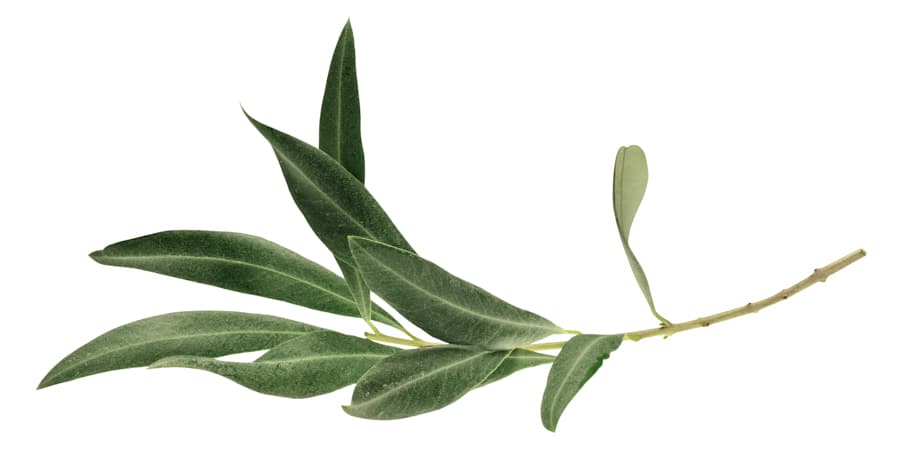
Today, researchers found that it contains powerful antioxidants and polyphenols. These properties are gastroprotective, meaning that it helps protect the digestive system to maintain a healthy balance. That makes olive leaf unique to help reduce the symptoms and strengthen the body against candida overgrowth.
Olive leaf contains a high concentration of oleuropein, which can help improve gut health.
A 2016 study found that oleuropein was effective in inhibiting candida activity.
Researchers for another 2015 study discovered that Candida was specifically sensitive to olive leaf extract.
Stabilizing blood sugar is important in fighting back candidiasis and yeast. That is why Type 2 diabetes is a risk factor for developing an overgrowth, and a sugar-free diet helps fight back against yeast.
Olive leaf can help in this to provide some relief from symptoms and improve insulin levels.
In one review of several studies, researchers found that olive leaf extract improved insulin regulation.
Weight management is another challenge with Candida. Weight management is not always as simple as calories in, calories out that many people believe. Instead, epigenetics, or how genes are expressed, and microbiome are critical factors in weight gain or loss.
Olive leaf can help by affecting the epigenetic and Candida factors that can lead to weight gain.
Researchers have found that olive leaf regulates the expression of genes involved in weight gain to reduce the chances of obesity.
Olive leaf can also be particularly helpful in obtaining soft and smooth skin. Candida can leave sufferers more vulnerable to viruses and bacteria that can wreak havoc on the skin.
Olive can help fight against these secondary infections.
In one study, researchers overexposed mice to ultraviolet radiation damage, which is equivalent to spending too much time in the mid-day sun. Mice that supplemented with olive leaf experienced faster healing than those who did not.
Another study found that olive lead inhibited the herpes virus when applied to a sore. Olive leaf’s antiviral and antimicrobial properties are powerful for hindering skin infections.
Black Walnut Hull
The Black Walnut are beautiful trees prized for their dark grain and workable texture. They are native to Europe and New England.
However, the nut’s outer shell, or the hull, is where its potent health benefits lie.
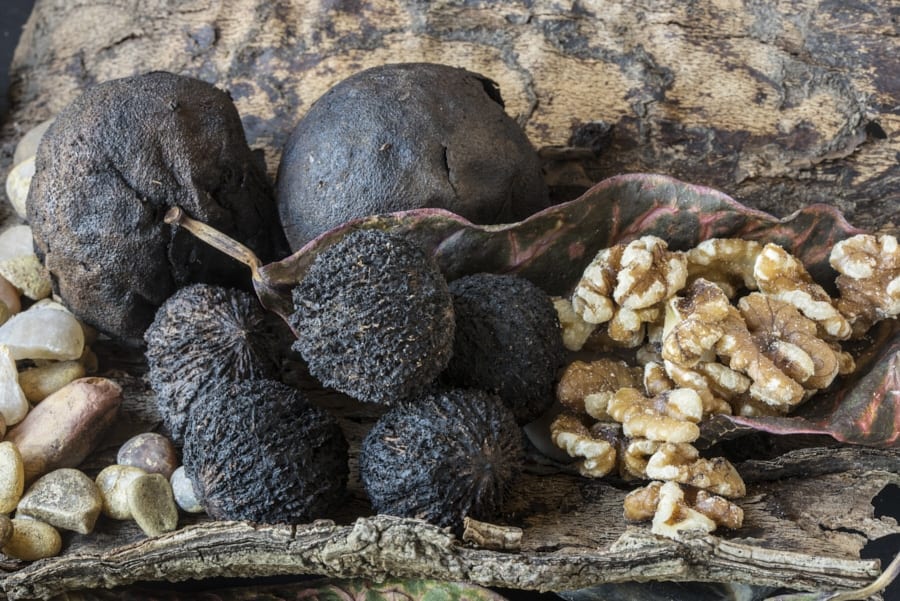
It has been used for thousands of years, dating all the way back to the Ancient Greeks. These practitioners reportedly used the hull for gut disturbances. They would also juice unripe hulls to apply directly to yeast infections on the skin.
More recently, researchers have found that it contains both antibacterial and antifungal properties. One property in particular, juglone, is particularly powerful in fighting yeast like Candida.
In a 2018 study, researchers tested juglone against different strains of both fungi and viruses. They found that of all the strains, it was exceptionally powerful against Candida. In another 2019 study, researchers found that black hull had activity similar to other over-the-counter antifungals on the market.
Although research is still new and cutting edge, these studies point to what ancient practitioners knew through experience. They are promising in pointing to the hull as a potent aid against Candida.
Clove
The flower buds of the evergreen clove tree create the spice in most kitchen cabinets. Cloves are more well-known as a delicious fall-inspired spice used in gingerbread and Indian curries.
However, both Traditional Chinese Medicine and Ayurvedic medicine have used the herb to improve health. Cloves have been traditionally used to reduce inflammation, improve digestion, and stimulate the immune system.
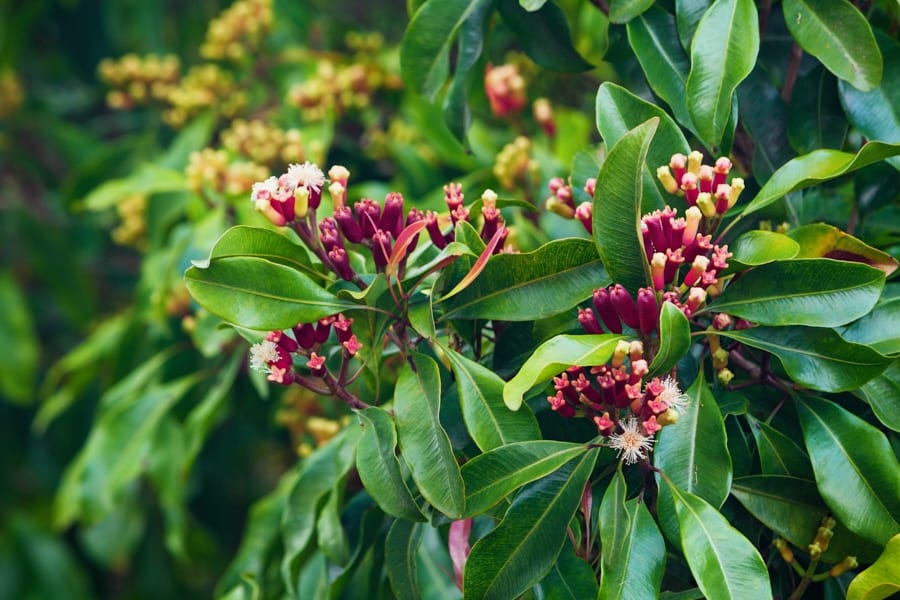
Today, researchers have found that cloves have many health benefits, especially when it comes to Candida.
Cloves can help improve blood sugar regulation, which is critical in taming Candida. One study on mice found that cloves exhibited hypoglycemic effects on diabetic mice. Another 2020 review of available studies found that it can treat diabetes because of its insulin-like properties.
Cloves also contain valuable anti-inflammatory properties to help bring down inflammation related to overgrowth.
A 2012 study found that it was able to suppress the inflammatory response in humans. In fact, researchers identified cloves as one of the 100 richest sources of antioxidants.
Cloves contain antifungal properties that are vital in fighting Candida.
In fact, one study found it was as effective as the antifungal medicine Nystatin without the side effects. Researchers identified cloves’ ability to decrease Candida’s biofilm and infiltrate the cell in a 2019 study. These properties make it particularly powerful against Candida.
Cloves are also potent against stomach ulcers. Considering that candida results in 54% of ulcers, it is particularly important for those who suffer from an overgrowth.
One study found that it was as effective as anti-ulcer medication in treating ulcers in mice. Researchers in another study found that it increased gastric mucus productions, a vital aspect of reducing the chances of ulcers.
Ceylon Cinnamon Extract
Cinnamon has been hailed around the world for thousands of years because of its unique and warm flavor. It is used in nearly every cuisine, both whole and in powdered form.
There are various types of cinnamon, each with its own strength. The typical cinnamon found in groceries today is known as Cassia and is widely used because of its stronger flavor.
However, Ceylon cinnamon, sometimes referred to as “true” cinnamon, holds potent health benefits. It can be a powerful aid in the fight against Candida.
There is a growing body of research that cinnamon holds strong antifungal properties. One 2019 study found that it was promising against oral infections involving Candida. Another 2017 study found that its antifungal properties inhibited six different Candida strains tested.
Cinnamon is also a powerful aid for balancing blood sugar.
Studies have found that cinnamon works because of its effect on digestive enzymes. They slow down the absorption of glucose in the bloodstream. This makes it easier for the body to produce the insulin it needs to digest it properly. That is why a study on diabetic patients found it improved fasting glucose levels no matter the level of dosage.
Ceylon cinnamon also helps fight common allergens. In an inflammatory state, such as an overgrowth, the body is more vulnerable to allergies. Some studies show that it reduces allergic actions. Its anti-inflammatory properties can help reduce histamines that lead to allergies.
Artemisinin
Artemisinin is one of the potent properties that gives Wormwood its unique ability to fight Candida. On its own, it helps provide an even bigger boost to the gut and microbiome.
In fact, it is so powerful that the World Health Organization recommends using artemisinin along with antimalarial drugs to fight malaria.
Researchers have found that it can fight Candida as well as viruses. It works by attacking the very energy source of each yeast cell. Researchers have also found that it degrades the biofilm, which is Candida’s protective mechanism. Without protection, the body can more easily discard the overgrowth.
Life Hacks for Candida Overgrowth
It’s impossible to out-supplement poor lifestyle habits and a nutrient-poor diet. Although these herbal remedies can provide a powerful boost, they should complement effective changes.
Here are some ways to combat Candida and feel better again:
- Cut back on sugar. Candida feeds off of sugar, so reducing sugar is a powerful way to cut its energy source. For more mild cases, this can mean only refined carbs and other obvious sugar sources. However, most require cutting fruits, starchy vegetables, drinks with yeast, grains, and beans, among other overgrowth triggers. After cutting them out for a prescribed length of time, patients can slowly reintroduce the foods. However, this should be done with practitioner oversight.
- Reduce stress. Stress affects each part of our body. It is especially detrimental to our microbiome. Take some time to destress. Eliminate any stressors that can be removed and learn coping mechanisms for the rest. Prayer, meditation, deep breathing exercises, and movement are all-powerful steps in improving the microbiome.
- Get more sleep. Even with the perfect diet and exercise routine, a lack of sleep can destroy our health. It puts additional stress on the body, which also affects the microbiome. Even one night can wreak havoc on the body. Aim to get 7-9 hours of sleep per night, depending on what feels good for you and your body.
- Take probiotics. Taking out Candida isn’t enough. We need more beneficial bacteria to bring it back into balance. Otherwise, Candida will quickly take over again. Probiotics can help reseed the microbiome to keep Candida in check.
- Take medication as needed. In the case of severe or stubborn growth, antifungals may be required beyond natural remedies. Talk to a doctor if symptoms are severe or seem unresponsive to any changes. Also, be sure to incorporate these other supplements and lifestyle changes to restore balance once Candida is eliminated.
Candida in and of itself is not a problem. However, when life circumstances cause it to take over, lifestyle and diet adjustments are necessary. It is a symptom of internal imbalance, so reducing symptoms requires creating balance in the microbiome.
GET SOCIAL – LIKE, COMMENT, PIN, AND SHARE!
Recommended
Elevate Your Memory: Nature’s Best for Cognitive Boost
It can be frustrating, the way it infiltrates anything and everything in one’s routine. At first, we might not be able to put a finger on what’s going on, or even think of it as …
Deficiency to Vitality: The Role of Maca, Epimedium, Tribulus, & Goji Berry
One of the most fundamental aspects of Traditional Medicine is the concept of yin and yang. They are opposite but complementary forces that are essential in balance for optimal health. Too much or too little …
Unleashing Siberian Eleuthero: From Energy Boosts to Stress Relief & Beyond
Herbs can be powerful tools for health. Over time, research has revealed certain botanicals to have numerous benefits. Plants like schisandra, rhodiola, and he shou wu are great examples—but turning to just one herb isn’t …
- Exclusive Offers
- Product Giveaways
- Latest Research
- New Product Launches

